Tie Silencer V3: a rather fictional report
The development of the Tie Silencer
The term "tie fighter" is associated with qualities such as agility, speed and firepower, but also with the idea of pitiless replaceability. As long as this concept fitted into a system of rule that equated galactic peace and order with unconditional submission and obedience to the will of the Emperor, the so-called Tarkin Doctrine seemed to work.
Tie fighters without shield generators and hyperspace capability might be sufficient to suppress limited uprisings and pacify individual star systems. However, when the Imperial Fleet faced an opponent in the Galactic Civil War who, if not in quantity then in quality, could field military equipment at least equal to the Imperial arsenal, the weaknesses of Grand Moff Tarkin's strategy became apparent.
The catastrophic casualties among the Tie units, especially from the second year of the war onwards, reached a level that even an Empire with access to galaxy-wide resources could not sustain in the long term. Criticism of the strategic and tactical approach was not advisable under the political circumstances of the time and sometimes required suicidal courage, yet resistance was forming in officer circles against the rigid adherence to an outdated strategy. An alarm sign for all who wanted to see it was also the increasing number of cases of desertion and defection to the enemy: not all Tie crews wanted to let themselves be wasted without hesitation.
Whether the story that the legendary Commodore Vuit Skerris, then holding the rank of squadron commander, would actually have replied to the visiting Grand Moff Tarkin with the challenging phrase "A squadron of X-Wings, sir! " when he asked the more formal question of whether he had a wish, but it gets to the heart of the matter: the Imperial command staff had to rethink and release plans to develop a space superiority fighter that could stand up to the new generation of Rebel fighters with sufficient self-protection capacity and hyper-jumping capability.
It was possible to draw on the tradition of the heavy space fighter, whose development at Sienar Fleet Systems and other manufacturers had never completely stalled. The line begins with the Tie Advanced V1, which was further developed under Dark Vader's guidance into the Tie Advanced X1, which he himself deployed. Shields and hyperspace capability were integrated into the compact cell of the basic Tie design for the first time.
The idea initiated by this was never to disappear. Already two years before the completion of the first Death Star, the then commander of the 7th Imperial Fleet, the influential Grand Admiral Thrawn, took the initiative to develop a Tie equipped with three solar wings and capable of hyperspace. The development teams at Sienar-Jaemus set to work and were able to present the first project studies shortly afterwards.
The Tie/d Defender derived from these studies proved the forward-looking potential of this combination of old-fashioned excellent manoeuvrability and speed with the demanded new aspects of passive and active self-protection. Although the military and political upheaval at the end of the Galactic Civil War hindered the spread and use of the Defender, which was produced in relatively small series, the consolidation and reorganisation of the fleet under the regime of the First Order took place exclusively under the auspices of the new path taken by the Tie Defender. The Tarkin Doctrine had finally had its day.
The Tie Silencer/ Pre-series
Only recently, the Tie Silencer by Sienar Jarmus was presented as the last step in the development of this line. Even if not all data are available yet, it is clear that the Silencer in optimised form takes the concept of the heavy space fighter to an impressive climax.
The armament consists of a battery of a total of four SJFS L-s9.6 laser cannons, supplemented by two heavy rocket launchers. Two redundant Ingus generators of the latest generation build up a powerful energy shield, which not only serves for self-protection, but also allows the Silencer to excel in atmospheric flight. The maximum speed (atmosphere) is given as 1850 Km/h.
The powerful gravitational projectors also make a maximum acceleration of 4500g possible. In open space, a value of 155 Megalight/h could be flown, which clearly exceeds the 140 Ml/h maximum speed of a Tie/sf. Flight control, navigation and hyperjump are calculated by a permanently installed Torplex AI of consciousness class three.
At 17.4 metres in length, the Silencer is unusually long for a Tie, which is due to an enlarged solar panel surface and its arrangement in an articulated wing configuration. This also achieves a low frontal cross-section, which is favourable for tactical reasons.
The Tie Silencer will probably gradually replace the variety of old Tie types as the new standard Tie of the Imperial Navy in the near future, as it offers superior characteristics in all operational roles both for combat in open space and in orbit/atmosphere in planetary operational environments.
My model shows the third pre-production machine in the colours of the training squadron run by the Imperial Skystrike Fleet Academy. This unit is responsible for testing the Silencer under operational conditions, for which it is transferred aboard a Resurgent-class Star Destroyer for the duration of a full operational tour. By the way, the first three pictures in the gallery show the Silencer V3 during atmospheric flight tests on a desert planet.
About the model
My interpretation of the Silencer comes from Revell's new kit released in 2017. The term "plug-in kit" is a perfect description: "Kylo Ren's Tie" can be built in just a few glue-free steps. After that, the young target audience can immediately indulge in the game undisturbed, the imaginative power of which can be enhanced by a built-in noise source that bears some resemblance to the "flight noise" of a Tie fighter.
What Revell packs in the box here is exactly what is promised: a relatively detailed toy-like model that can be built without frustration. Since my intentions went in a different direction, I made a few changes. First, the batteries and the loudspeaker part were removed and the resulting openings were covered with " realistic" scratched parts from the fund. Furthermore, a few additions could be made. These include the new covering of the sensor banks, the redesign of the shield generators as well as the detailing of the cockpit with belts and control elements.
Since I didn't want a Silencer in the old familiar imperial "grey over everything" look and I always have to come up with a background story for motivation in purely fictional projects, a colour scheme was chosen that seemed plausible to me for a test machine and that would also bring colour into the grey monotony.
Although the self-designed maintenance frame does not answer the old question whether Ties have built-in landing frames, it gave me further freedom to improvise a little with imagination and a twinkle in my eye.
The nice thing about these projects is that for once you are not bound to historical and real-life models, but can simply tell your own story as you please. It's really good and so much fun that I'm sure the next "Star Wars episode" will soon be shot on my workbench.
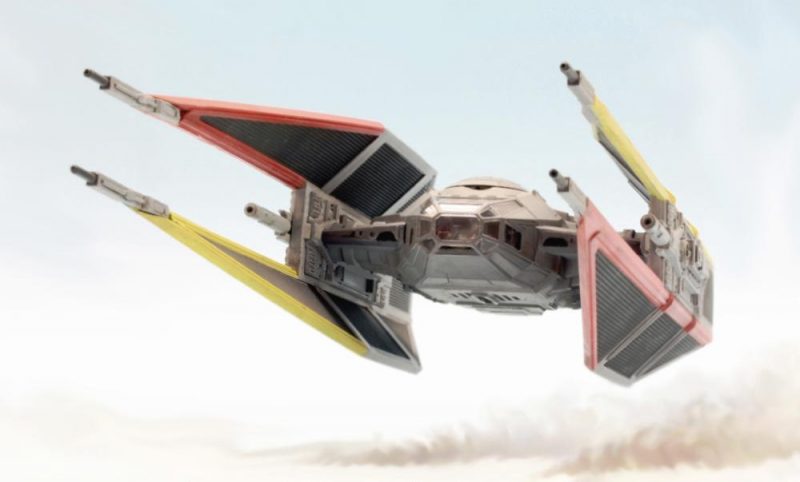
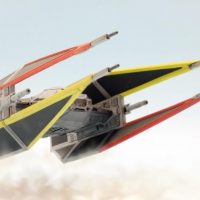
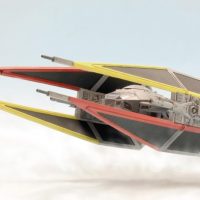
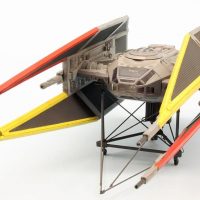
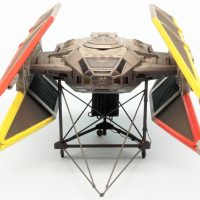
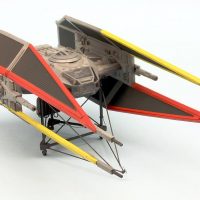
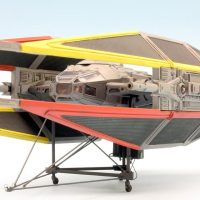
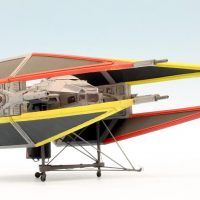
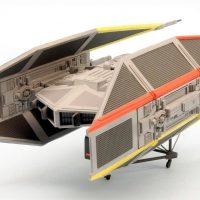
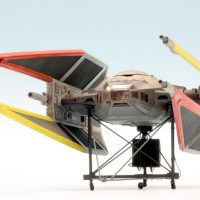
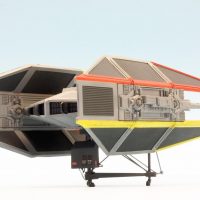
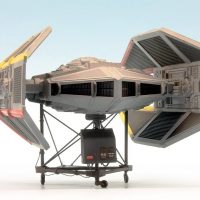
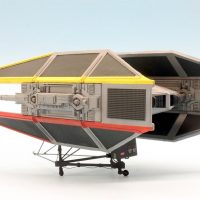
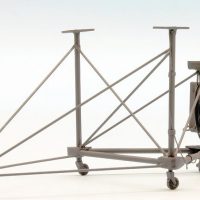
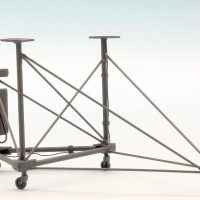
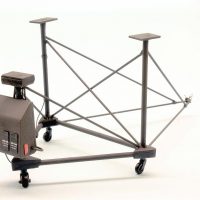
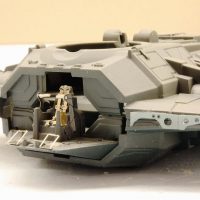
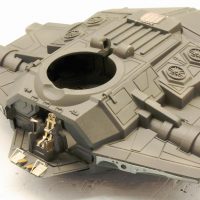
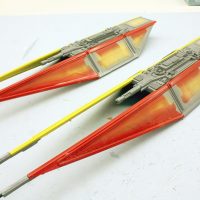
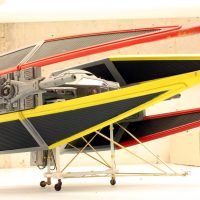
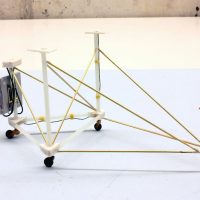

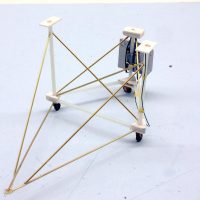

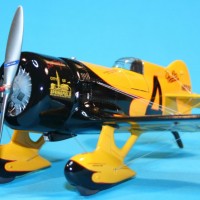
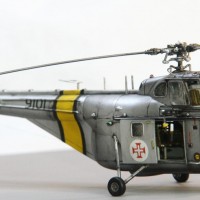
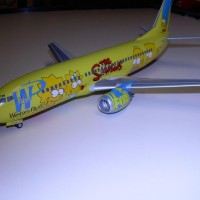
Very interesting Roland. Great build and I really enjoyed the back story. Happy Holidays.
Rick
I loved your model , as well as your supporting text, Roland!
I might build a Sci-fi one day, builds like yours motivate me to do so!
Thank you Rick and Spiros; I'm glad you like the Silencer!
Happy Holidays to you!
You're as inventive with the story as you are with the model. Good work on both!
Thank you very much for your very appreciated reply!